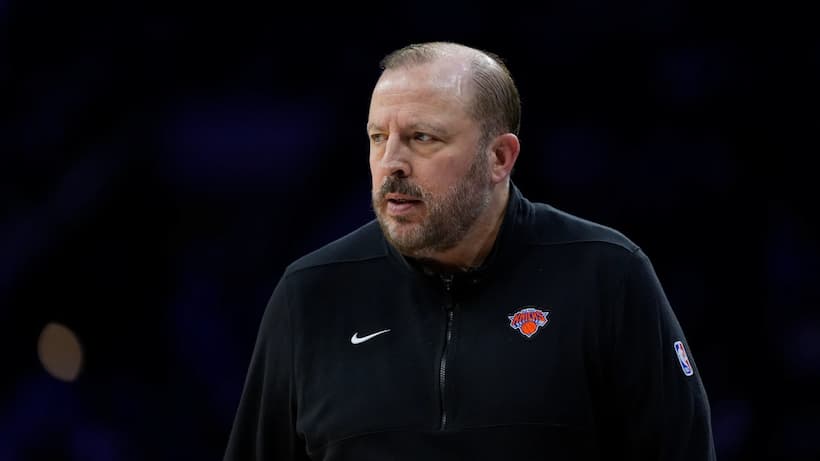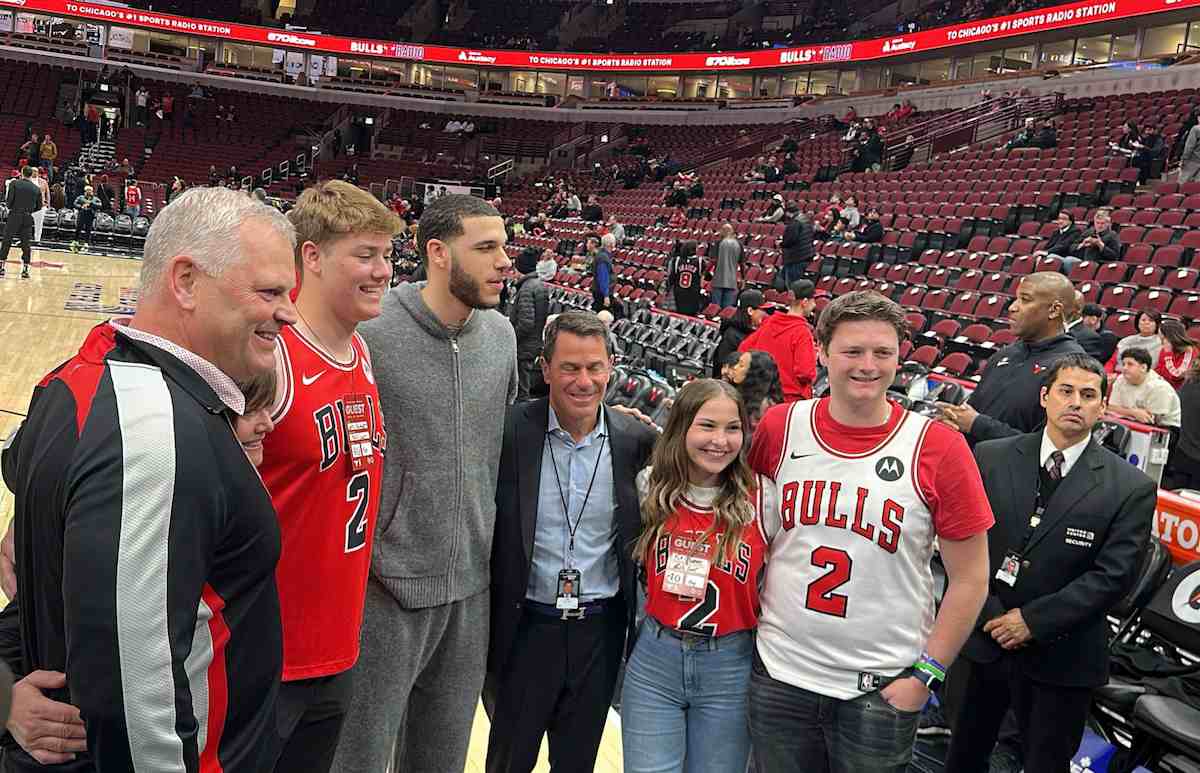With celebratory smoke slipping into the interview room and Warriors’ screams muffled across the hallway, Ime Udoka delivered one overarching theme for the Celtics’ offseason — come back better.
“Let’s not be satisfied with getting here,” Udoka told them. “It’s not guaranteed you’re going to get here. The East is getting tougher every year. Come back better. We will as a staff as well.”
Udoka singled out Robert Williams III specifically that night, who showed enormous growth by grinding out +30 (+/-) minutes through knee pain in the Finals, giving Williams III credit while seeking more lower-body strength, minutes and availability from the big man. Jayson Tatum, Jaylen Brown, Marcus Smart, Grant Williams and Al Horford also played some of the best basketball of their careers through the most dramatic mid-season turnaround the league had seen.
Despite some work to do around the edges of the roster, the Celtics know most of their improvement will come internally this summer. Any complacency could lead to a step back. The members of the 2018 East Finals team know better than any of their teammates, getting back isn’t promised.
“Obviously, very tough to lose and be in this position,” Horford told CelticsBlog after Game 6. “But I’m very proud of our group, I’m very proud of the growth of our group all year. We went from a below .500 team, average team, to putting it together and I don’t want to get caught up in some of the bad stuff that happened tonight. I want us to keep perspective on how much growth Jayson and Jaylen had this year. It’s a lot on their hands, a lot of responsibility, and they took it in stride, they made adjustments, they improved, they grew as players, but as you can see, there’s still a lot of growth and a lot of work for all of us. The Warriors definitely were on a different level and it’s something that we have to accept, and we all have to grow.”
Horford’s upbeat, optimistic tone at 36 years old, when he faces longer odds of returning to that stage than anyone, provides hope that this group can dig deep again next year. They established a defensive system that flowed into an identity, built around the most dominant starting lineup in basketball, learning to switch and stopping opponents in isolation.
Horford doesn’t need to change much entering 2022-23, shooting 37.5% from three in the new year, finding a louder voice in the room and standing out among the most active defenders in the league. He averaged 11.9 points, 9.6 rebounds, 3.5 assists and 1.6 blocks per game on 50% shooting through the first three playoff rounds.
However, the Celtics need to find ways to spell him. Horford faded after a hot Game 1 in The NBA Finals. That starts with Williams III ramping up his workload, already raising his playing time from 18.9 minutes per game last season to 29.6. Horford occasionally gave Boston a better look at the five, particularly through Williams III’s injuries in Round 2 against Milwaukee and against Kevin Durant in Round 1. Where Giannis Antetokounmpo could attack and power through Williams III’s chest, Horford provided a stronger base and more discipline against the star on-ball.
Udoka’s scheme, taking Williams III off-ball and placing Horford on-ball, dominated, but placed an added burden on both players as Enes Freedom then Daniel Theis often sat. Diversifying his offensive game will help Williams III immensely, whether adding a post hook, mid-range shot or some dribbling, and both he and Horford can factor into playmaking more to curb turnover issues. They combined for a 22% usage rate in The Finals after a 25.9 USG% in the regular season.
“Once he gets put in a situation where he feels like the team needs him to do more offensively, that’s what he’s going to do,” Rickey Evans, Williams III’s trainer and mentor, told CelticsBlog in May. “As long as he feels like the team’s gonna be successful with him blocking shots, rebounding and defending, he’ll just keep doing that, but I think that once he starts to get more involved offensively, because he has the talent, he has the skill to do it, I think that’s only going to make the team better.”
Tatum might’ve taken The Finals loss harder than anyone at the podium. Hanging his head. Speaking faintly. Wearing the weight of the loss on his shoulders, whether for his missed layups, free throws or ballooning turnover rate. Tatum improved more than any Celtic this year. The ball exploded out of his hands when double teams took him out of the play. He saved the team’s season with a vintage Game 6 in Milwaukee. He made the All-NBA First Team and dominated defensively, on the boards and, at times, as a passer when his shot didn’t fall.
Tatum also has the furthest to aspire. He mentioned poise when asked where he and the team needed to improve most. The Celtics spiraled into three straight losses in The Finals, each worse than the last, and couldn’t slow a 21-0 Warriors run in the deciding game. Complaining cost them, particularly on a play in Round 2 where Tatum didn’t return to the defensive end and forced Derrick White to take a foul to prevent a wide open Wes Matthews three. Stagnancy did too in Game 4 against the Warriors, nearly did in Game 7 in Miami and did in the Game 5 loss to Milwaukee.
Udoka constantly harped on playing in a crowd, and when he talked about what the team needed to do on any given night, he often seemed to be talking directly to Tatum. Less fraternizing with other stars. Finding your own ways to lead. Trust teammates.
“I thought Jayson’s voice got way louder as the year went on, and I think that’s a huge, huge thing for our team,” Brad Stevens said last week.
Brown embraced a louder voice too this year, grew more involved in the offense, overcame early injuries, found a way to mesh with Tatum after early concerns over their dynamic and fit into a defensive scheme that proved less natural than guarding one assignment. As Tatum faded late in The Finals, Brown emerged, driving downhill and giving the team a chance with 23.5 PPG on 43.1% shooting.
The occasional mental lapse on defense, missed free throws, the handle and playmaking strides Tatum achieved remain Brown’s highest hurdles to overcome toward achieving the same level of stardom. He doesn’t have far to go and often sets the speed the team wants to play at, but needs to acknowledge the dribbling issues he faces to address them.
Smart took that look in the mirror around January, and when he transitioned into a more defined role — shooting less, passing more and focusing on the flow from defense to offense — the Celtics rose into the league’s best second-half offense. Smart already underwent much of the transformation his teammates will seek, changing his shot profile to play closer to the rim, drawing more free throws and continuing to improve as a shooter (35% 3PT in the playoffs). His Finals performance proved as shocking as Tatum’s, throwing ill-advised passes, struggling to slow Steph Curry and trying 13.2 attempts per game. Consistency now becomes his virtue, on and off the court.
“It’s just being me,” Smart said repeatedly through the Celtics’ run on his game and leadership approach. For better and worse, he’s Boston’s point guard and the grass always looks greener elsewhere. If the Celtics traded him mid-season, they don’t make The Finals.
The Celtics’ starters will inevitably return from that run. They’ll need to be better. Boston’s bench doesn’t have the same assurance, because they need to get much better. Golden State received 26.8 PPG on 49.2% shooting in the championship round compared to 20.7 PPG on 37.3% for Boston — a defining difference. Derrick White’s season-long shooting struggles continued, something he said he’ll try to address in the gym this summer. Switching neutralized Grant Williams and made him nearly unplayable. Daniel Theis became unplayable. Payton Pritchard couldn’t find his shot. Aaron Nesmith sat all series and almost all year.
They’ll receive a second chance due to a lack of flexibility, potentially with reinforcements and added competition. Grant proved himself with an astounding regular season and won a Game 7 in round two with his spacing. He might be the Celtics’ most reliable shooter right now and the future at the four after Horford, though he’s extension-eligible already. White, whose addition to the team hardly went as planned, often made up for offensive struggles by doing the little things. Pritchard couldn’t do the same with fewer, less consistent minutes, but did close the regular season shooting well.
“My first goal is going to be finding consistent minutes every night,” Pritchard said. “Where I can gain the trust where I can be out there for 20 minutes per night, or maybe more, instead of it fluctuating.”
That wasn’t the case for Nesmith, who admitted after the season he lost his confidence in his shot early and never got it back, now needing a mental break. A stronger start, many within the Celtics agreed, will help the team invest more in its second unit, youth development like Nesmith’s while limiting the minutes load on the starters. They spent two straight seasons digging out of that sub-.500 hole. The bench players, as Grant put it, need to make themselves available to close games and to fit different matchups.
“I have to be able to improve offensively, to be able to put a little more pressure on the opposing end,” Grant told CelticsBlog in his exit interview. “When you have the opportunity, you have to take advantage of it, and you want to be to the point where you can’t be taken off the court. That’s my number one thing is where no matter if you’re a coach, no matter if you’re a player, no matter if you’re anyone in the stands, you’re looking at (me) and saying, ‘he can’t come off because he’s making such an impact.’”
Stevens emphasized the team dynamic the Celtics built in 2022 and cautioned against disturbing it. Boston needed more depth and should pursue it. More youth development projects on the back end of the roster can’t hurt, and JD Davison proved as worthy of a flier as anyone given his high school pedigree at No. 53 overall in the draft. Utilizing the trade exception makes sense to allow this clearly contending core to maintain a significant salary through Brown and Tatum’s current contracts.
The Celtics built their identity already, and showed they can be as dominant as any other roster in the league, finding leadership and accountability from top to bottom. There’s no need to mess with that significantly despite evident flaws that heightened in the Finals. Key members of the team encouragingly realized this young group needs to mature. It’ll be on each individual to do that within their own game and the group. If they do, they should be playing for a title in 2023.
“We’ve seen what we can achieve and it hurts that we fell short of that,” Udoka said. “But what I did say was, the future is bright and we’re just getting started. So let’s all come back better from this experience.”






